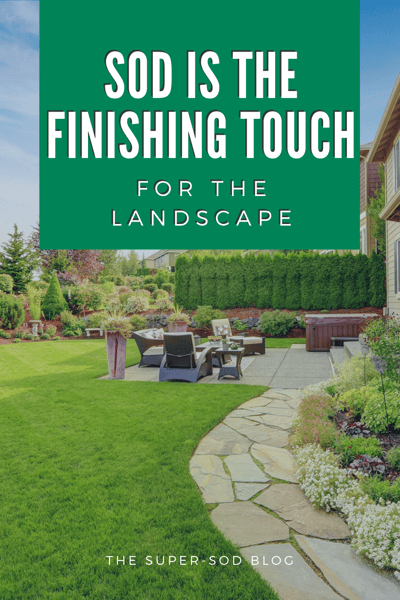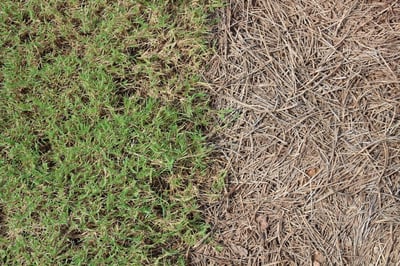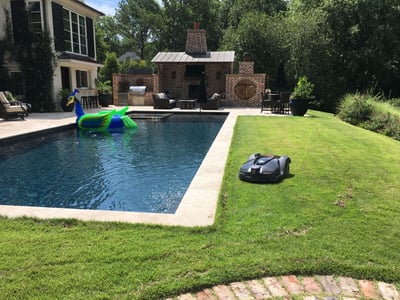

Sod is the Finishing Touch for the Landscape

The other day I met with a client for a sod consultation, and like so many others before him, he was nowhere near ready for sod. He had just purchased a home with overgrown plantings and unkempt vegetable beds in inadequate sunlight. The previous homeowners had left poorly constructed patios and walkways made of multiple mismatched materials. He wanted everything torn up and new sod put in, but he had no idea where to begin.
Sod is never where you begin. It is the finishing touch to a well-planned landscape.
Step 1. Site Assessment
The very first thing you should do is get to know your site.
SunLight
How many hours of sun is it getting, and where? For iPhone users there is an excellent free app for this called Lumos: Sun and Moon Tracker. All plants, including sod, need certain numbers of hours of direct sunlight; so knowing how much sun an area gets is critical. Split the site up into zones based on the number of direct sunlight hours. Remember that the number of sun hours varies depending on the time of year. It is important to know how many hours you are getting in the growing season.

Bubble diagram showing the path of the sun and how many hours of sunlight certain sections receive. Drawing by Shannon Hathaway.
Grade (or slope)
Check the grading and make sure you know if there are any drainage or erosion concerns that will need to be addressed. Make sure irrigation is available and group plants by their water needs.
Purpose
Determine how you wish to use the space – for gardening, relaxation, recreation, pets, or simply a pleasant view. Knowing how much sunlight each area receives will help you determine where a vegetable bed should go, or a hammock, or a lawn. Now you have the basis for a good plan!
Step 2: The Plan
take measurements
Measure the site or use an online survey to get your site dimensions.
Start With the Big Picture
Start with the bigger features like patios, large trees, walkways, etc. Ignore small details for now. Bubble diagrams are great for this. Don’t worry about perfection. The design will tighten as you add more detail.
Understanding the cost of larger ticket items is important. For example, before you plan a patio, get a sense of how large it needs to be to meet your needs, and what materials fit your budget.
If you are hiring a contractor to install hardscaping like patios, walls, decks or walkways, choose someone with experience who does quality work. Do not choose the least expensive contractor. It is always an expensive mistake.
If you plan to do the work yourself, be realistic about your abilities and limitations, and plan accordingly. There is nothing more frustrating than taking on a project you cannot handle.
Pace Yourself
Allow enough time for each aspect of the plan. Rushing can lead to subpar results. Once the larger projects are planned out, then you can add details to your plan.
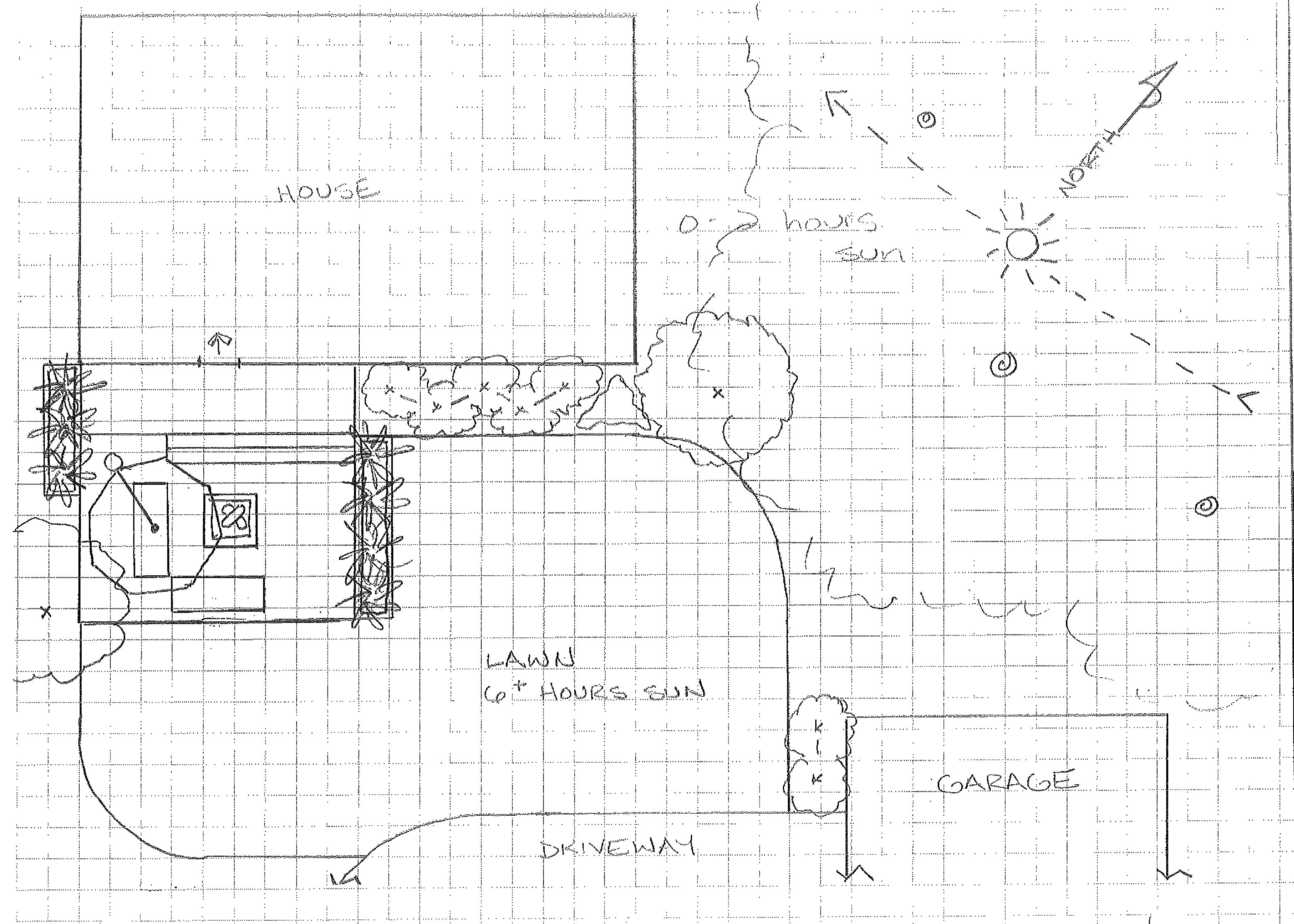
Simple landscape plan that takes into account the number of sunlight hours. Drawing by Shannon Hathaway.
Step 3: Order of Implementation
Fix problems first
This includes demolition/removal of existing features that are not staying, correcting drainage, and improving your ground by adding Soil³ compost. This is critical! A lovely plan can have disappointing results if the soil quality is poor. It's important to understand the difference between topsoil and compost.
Tackle the larger projects
You do not want to have building traffic and materials on a brand new lawn! (Sod is the finishing touch, remember?)
Build your hardscaping (stonework); prepare your soil; plant trees, shrubs, gardens; and then mulch them. You do not want to bring wheelbarrows of soil and mulch across new sod. Remember to refer to the number of hours of sunlight before planting to make sure the plants will thrive.
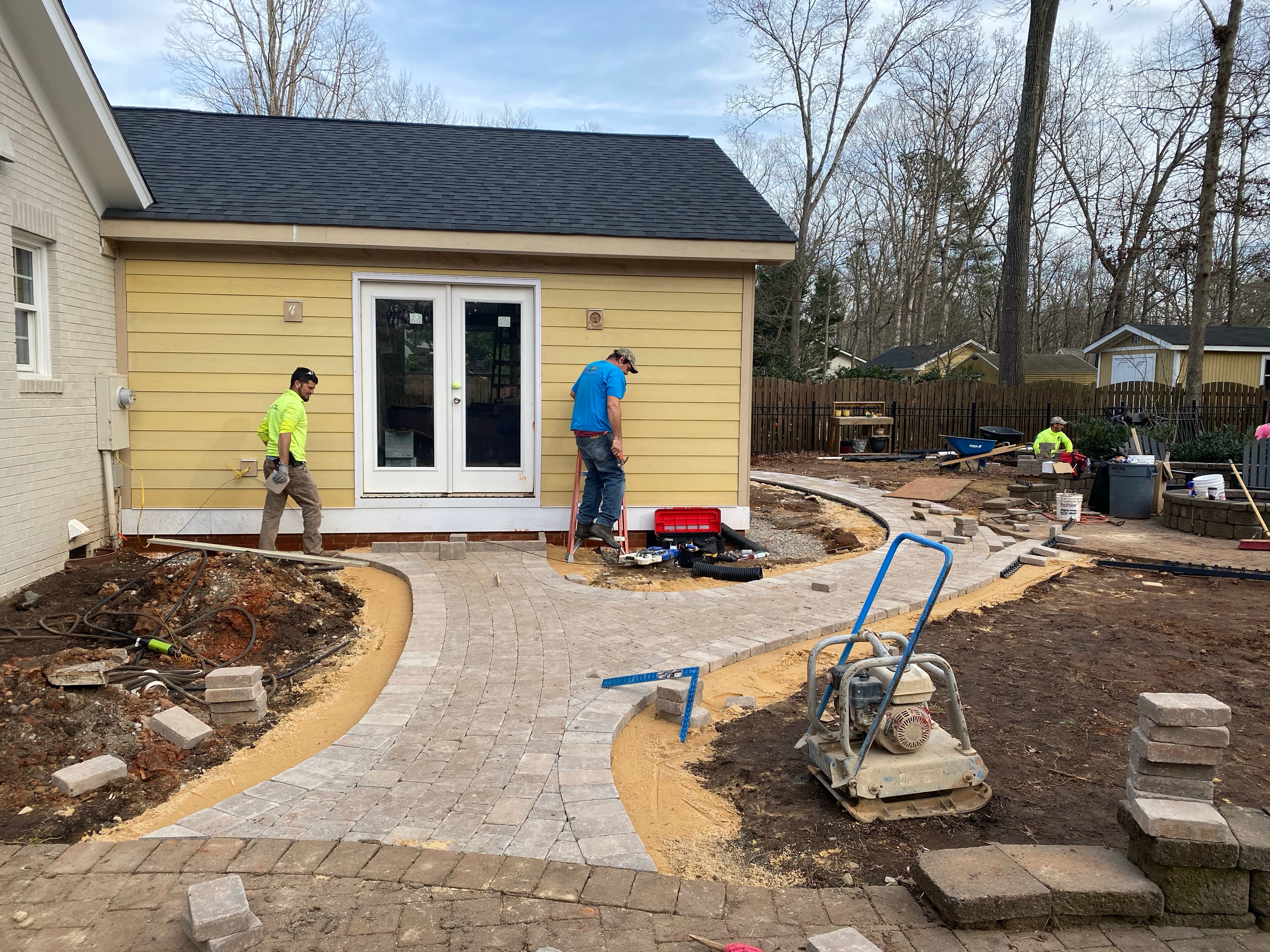
Construction first!
NOW you are ready for sod
I would rather see you have a smaller lawn that is performing beautifully than try to force sod into areas where it will not receive the light it needs. Each sod variety has different sun requirements, but no sod likes full shade. None.
We can help you determine the best sod based on the available light and the activities of your family or you can play around with our turfgrass selector filter to help you make your decision.
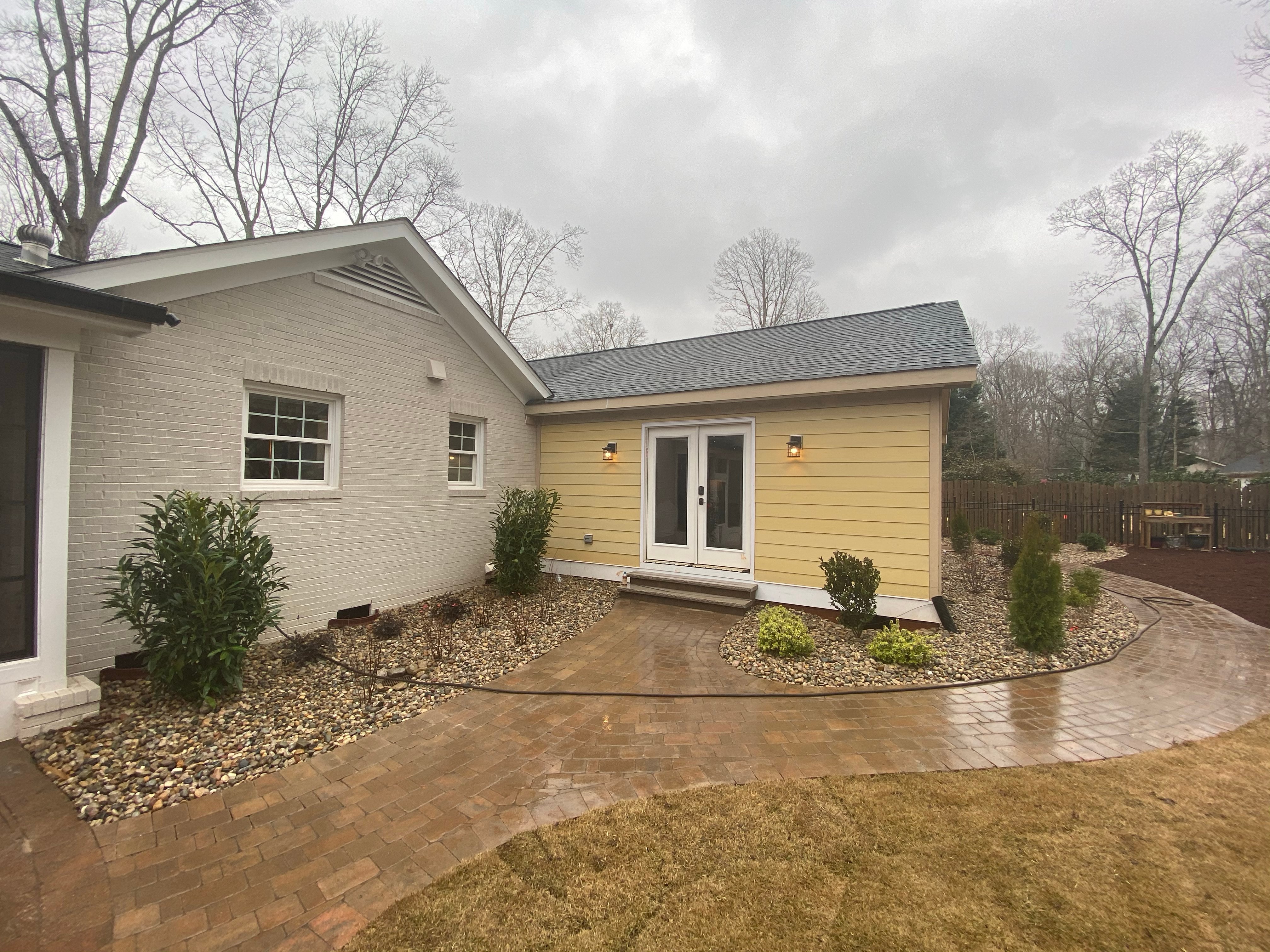
Finished project with dormant sod.
Step 4: Maintenance
There is no such thing as a "no maintenance" landscape. Make sure you know how to care for the plants you install, and give them the care and attention they need. They are living things, and need light, water and nutrition, just like us.
If you follow these simple steps, you will avoid costly and frustrating mistakes. If you do not know how to do something, ask an expert! The right plant in the right place is critical. Do not try to fight nature because you will lose. Work with nature and you will succeed!
